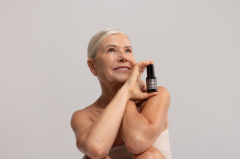Discover the beauty of lavender, from its captivating scent to growing tips, varieties, and unique uses in the garden and home.
I fell in love with lavender when I was about 20 years old and had come to live down south from Queensland. A scent of something wonderful and vaguely familiar met me and a friend during a bushwalk. I stopped, trying to find its source – a small bush with vibrant, dark-blue spires of flowers growing wild among a clump of rocks.
“That’s just lavender,” said my friend, amazed I didn’t know what it was. I’d read about lavender and been given sachets of dried lavender to perfume my cupboards, but had never met a lavender bush before. Back then, there were no easily available species of lavender to grow in the subtropics.
It was love at first sniff.
Soon after that, I met my first “hedged” English lavender on either side of a winding garden path, and great sprawling French lavender against house walls. I became a mildly fanatic lavender grower, planting every kind I could buy or take a cutting from.
It turns out that there may have been English lavender growing in subtropical and tropical Queensland, but I never noticed as it usually won’t flower unless it has a period of cold. English lavender also doesn’t like hot wet conditions. But gardeners in hot areas can try Allardii lavender (L. allardii). This is perhaps the heat- and drought-hardiest lavender, an incredibly vigorous, but rather coarse, grey-leafed lavender, summer flowering and very fast growing, with deeply indented grey leaves. Allardii lavender grows tall and straight until it gets woody and collapses all over the place. The leaves are fragrant as well as the blooms. Canary Island lavender adores heat and will flower well in humid areas. Keep all lavenders away from tall plants in humid areas, so that they have good air circulation and a full day of sun.
French lavender blooms from winter through to most of summer. It’s a sprawling, soft, green-grey bush with long softer leaves than English lavender and laxer stems and flower spikes.
English Lavender (L. angustifolia) is the hardiest of lavenders, with deep-purple flowers, intensely fragrant and the one used to distil lavender oil. There are many, many cultivars, all with stiff stems and usually growing to less than a metre. Different cultivars have their own distinct scent, especially as some producers have bred their own.
You can also find Italian or Spanish lavender (L. stoechas). It’s a bit like a delicate-looking English lavender and striking, very dark purple. Dutch lavender, Spikenard, Spike (L. latifolia or L. spica), is often used for the cheaper lavender oil, but it has a hint of camphor. It’s hardier than English lavender.
There is also Green Lavender (L. virid





